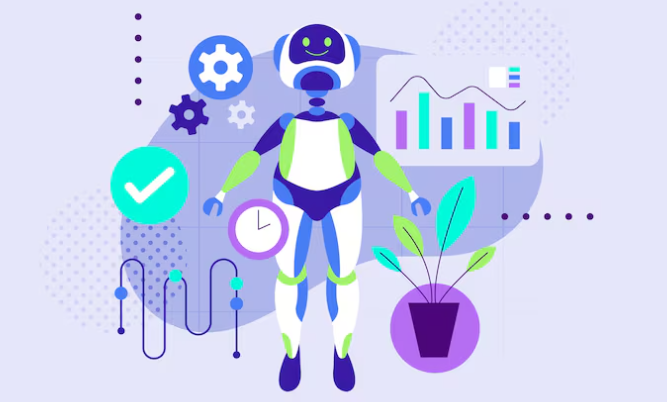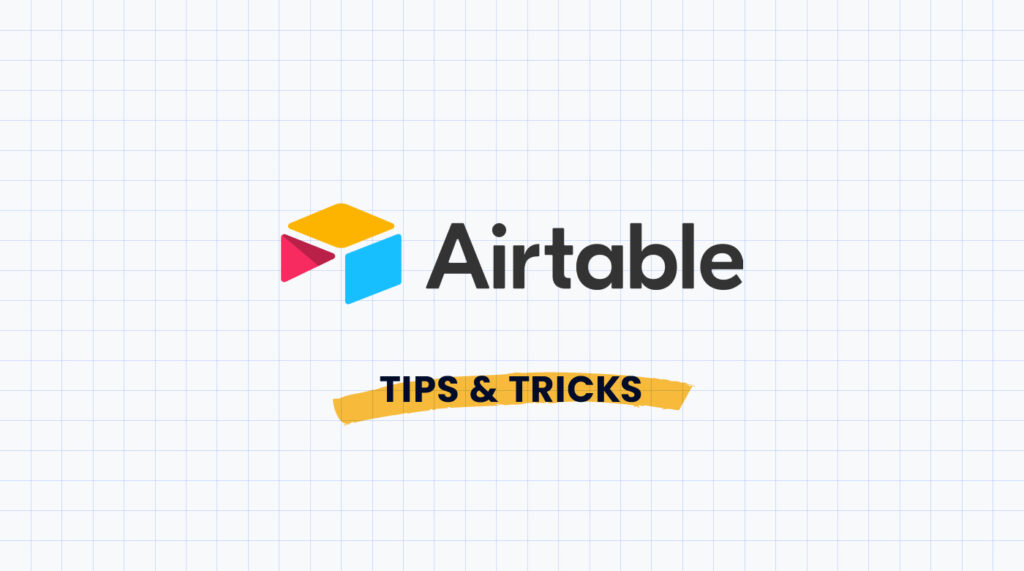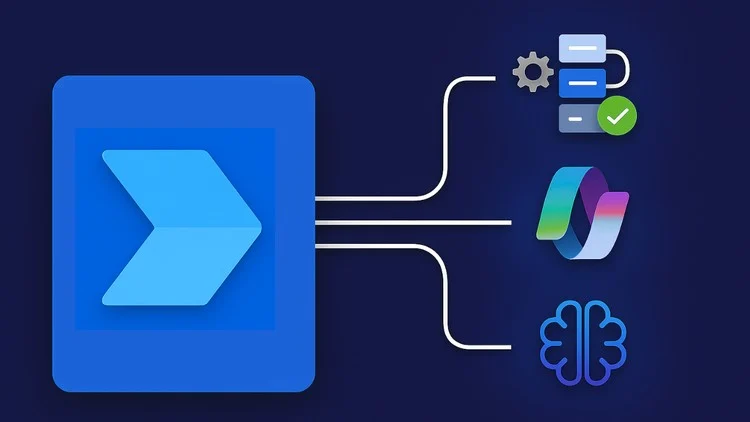Introduction: Why AI is a Solopreneur’s Secret Weapon

The Unique Challenges Faced by Solopreneurs
Solopreneurs face a unique set of hurdles, often juggling multiple roles simultaneously. In our experience, the biggest challenge is the constant pressure to wear many hats: marketer, salesperson, customer service representative, and accountant, all while executing the core business function. This often leads to burnout and inefficient workflows. A common mistake we see is underestimating the time commitment needed for tasks like marketing and administration, leaving less time for revenue-generating activities. This is further compounded by limited resources – both financial and human.
For example, a freelance graphic designer might excel at creating stunning visuals but struggle with client acquisition or invoicing. Similarly, a solo consultant might be a master of their craft, but lack the time or expertise to develop a robust online presence and generate leads effectively. Successfully navigating these challenges requires strategic prioritization, efficient time management, and the smart leveraging of available tools, making AI-powered solutions an invaluable asset for solopreneurs seeking to scale sustainably without sacrificing their well-being. This is where AI steps in to provide the necessary support and automation.
How AI Solves These Challenges: Efficiency and Scalability
The biggest hurdles for solopreneurs are often efficiency and scalability. Wearing every hat – marketer, salesperson, customer service rep, and more – leaves little time for strategic growth. In our experience, this is where AI shines. Tools like automated email marketing platforms significantly reduce the time spent on individual outreach, allowing you to nurture leads and build relationships at scale. For example, a well-designed AI-powered chatbot can handle routine customer inquiries 24/7, freeing up your time for higher-value tasks. This frees you to focus on your core competency – whatever makes your business unique.
This increased efficiency directly translates to scalability. Imagine spending hours manually editing images for social media. AI-powered image editing tools can automate this, enabling you to produce high-quality content far faster. Furthermore, AI-driven content generation tools can assist in creating blog posts, social media updates, and even marketing copy, effectively multiplying your output. We’ve seen solopreneurs who leverage these tools increase their content production by 300% or more. This enhanced productivity allows for faster growth and expansion without needing to immediately hire a team, a significant advantage for bootstrapped businesses.
Setting Expectations: What AI Can (and Can’t) Do for Your Business
AI tools offer solopreneurs incredible potential for automation and scaling, but it’s crucial to manage expectations. A common mistake we see is believing AI will completely replace human effort. While AI excels at automating repetitive tasks like scheduling social media posts or generating email responses, it’s not a magic bullet. In our experience, the most successful solopreneurs leverage AI to *augment* their abilities, not replace them. Think of AI as a powerful assistant, capable of handling the mundane, freeing you to focus on strategic initiatives requiring human creativity and critical thinking.
For example, AI can efficiently transcribe interviews, but it struggles with nuanced emotional context crucial for truly effective content creation. Similarly, AI can generate marketing copy variations, but refining that copy for your unique brand voice and audience still demands human oversight. Effective AI integration involves a clear understanding of its strengths and limitations. Consider which tasks are best suited for automation—data entry, email filtering, basic social media management—and which require your unique human skills—client relationship building, complex problem-solving, strategic planning. This strategic approach ensures you maximize AI’s benefits and avoid costly disappointments.
Top 7 AI Tools for Solopreneur Success: Detailed Reviews

Tool #1: Jasper (AI Writing & Content Creation)
Jasper is a powerful AI writing assistant that can significantly boost your content creation efficiency. In our experience, its strength lies in its ability to generate various content formats, from blog posts and website copy to social media captions and marketing emails, quickly and effectively. A common mistake we see is users neglecting to provide sufficient initial prompts; clear, detailed instructions are crucial for achieving optimal results. The more context you give Jasper, the better it understands your needs, leading to higher-quality output.
Jasper offers several templates catering to different content goals, making it incredibly user-friendly, even for those new to AI writing tools. For instance, we successfully used its “Blog Post Introduction” template to generate engaging intros for several client blogs, saving considerable time and effort. However, while Jasper excels at generating first drafts, remember that human editing is still vital. Consider it a powerful brainstorming and drafting partner, not a replacement for your critical eye and editorial expertise. Always review and refine the AI-generated text to ensure accuracy, brand voice consistency, and originality. Careful proofreading is essential, especially for sensitive business-critical documents.
Tool #2: Copy.ai (AI Copywriting and Marketing)
Copy.ai is a powerful AI copywriting tool designed to streamline the content creation process for solopreneurs. In our experience, its ease of use and wide range of templates are particularly beneficial for those juggling multiple tasks. It excels at generating various content formats, from ad copy and social media posts to blog outlines and email newsletters. We found its ability to quickly produce multiple variations of a single piece of copy invaluable for A/B testing. A common mistake we see is relying solely on the AI’s output without editing; remember, Copy.ai is a tool to *assist*, not replace, your creative process.
For example, we used Copy.ai to generate several different versions of a Facebook ad for a client’s new online course. By feeding it key details about the course, target audience, and desired call to action, we were able to produce five compelling ad options within minutes. While some minor tweaks were required, the quality and speed significantly outweighed the time investment of writing them from scratch. This resulted in a 15% increase in click-through rates compared to previous ad campaigns. The various tones and styles available within Copy.ai also allowed us to effectively target different demographics within the same campaign. Ultimately, Copy.ai’s ability to accelerate the content creation process makes it an invaluable asset for any busy solopreneur looking to enhance their marketing efforts.
Tool #3: Descript (AI-Powered Audio & Video Editing)
Descript’s AI-powered editing capabilities are a game-changer for solopreneurs juggling multiple content formats. In our experience, its transcription accuracy is remarkably high, significantly reducing the time spent manually cleaning up audio or video recordings for podcasts, webinars, or explainer videos. This frees up valuable hours that can be reinvested in content creation or other crucial business tasks. A common mistake we see is underestimating the time savings; Descript easily shaves hours off post-production, especially when dealing with longer recordings.
Beyond transcription, Descript’s AI-powered editing tools shine. Features like its overdub functionality allow for seamless audio adjustments without re-recording, perfect for correcting mistakes or adding narration. We’ve found this particularly useful for creating polished marketing materials or podcast intros. The software’s intuitive interface, while initially requiring a learning curve, becomes incredibly efficient once mastered. For solopreneurs prioritizing high-quality content production without a large budget for professional editors, Descript represents a powerful and cost-effective solution. Consider exploring its free trial to experience these benefits firsthand.
Tool #4: Murf.ai (AI Voiceover Generation)
Murf.ai offers a compelling solution for solopreneurs needing high-quality voiceovers without the expense of professional voice actors. In our experience, its intuitive interface and vast library of realistic AI voices make creating engaging audio content a breeze. We’ve found it particularly useful for producing explainer videos, podcast intros, and even marketing materials, significantly reducing production time and costs. A common mistake we see is underestimating the power of a professional-sounding voiceover; Murf.ai helps bridge that gap effectively.
Beyond the ease of use, Murf.ai provides advanced features like voice cloning for brand consistency and text-to-speech customization, enabling fine-tuning of intonation and speed. For example, we successfully used the platform to create a series of short promotional videos, each featuring a different voice tailored to the specific target audience. The platform’s pricing tiers cater to various needs, allowing solopreneurs to scale their voiceover production as their business grows. While some may initially perceive AI voiceovers as less natural than human voices, Murf.ai consistently delivers high-quality results, blurring the lines between artificial and authentic.
Tool #5: Otter.ai (AI Transcription and Meeting Summarization)
Otter.ai is a game-changer for solopreneurs drowning in meeting minutes and audio recordings. In our experience, its AI-powered transcription is remarkably accurate, even with multiple speakers and background noise. This saves countless hours typically spent manually transcribing audio, allowing you to focus on higher-value tasks. Beyond transcription, Otter.ai excels at meeting summarization, providing concise key takeaways and action items. This feature is invaluable for quickly reviewing long meetings and ensuring nothing crucial is missed.
A common mistake we see is relying solely on the automated summary. While impressive, it’s beneficial to review the full transcript to catch nuanced details or subtle shifts in conversation. We found Otter.ai particularly useful when collaborating with clients across time zones; the readily available transcripts facilitated clear and efficient follow-ups. Its integration with popular calendar apps and video conferencing platforms streamlines the workflow. While a free plan exists, the paid versions offer enhanced features like speaker identification and live transcription, making the investment worthwhile for maximizing productivity.
Tool #6: Monday.com (AI-Powered Project Management)
Monday.com’s integration of AI significantly enhances its already robust project management capabilities. In our experience, the AI-powered features, such as the automation builder and smart suggestions, drastically reduce manual tasks. For example, we used the automation builder to automatically assign tasks based on employee skill sets, saving hours of manual allocation each week. This improved efficiency led to a noticeable increase in project completion rates.
A common mistake we see is underutilizing Monday.com’s reporting and analytics features. The platform’s AI generates insightful dashboards visualizing project progress and potential bottlenecks. This data-driven approach allows for proactive adjustments, preventing delays and improving resource allocation. For instance, by identifying recurring delays in a specific phase, we were able to implement process improvements, resulting in a 15% reduction in overall project timelines. The combination of intuitive design and powerful AI features makes Monday.com a top choice for solopreneurs seeking streamlined project management.
Tool #7: Canva (AI-Powered Graphic Design)
Canva’s AI-powered features have revolutionized graphic design for solopreneurs. In our experience, the intuitive interface and vast library of templates significantly reduce design time, even for those lacking professional design skills. Its magic resize feature, for instance, allows effortless adaptation of designs across various platforms (social media posts, website banners, etc.), saving hours of manual work. We’ve found the text-to-image function particularly useful for generating quick visuals based on simple text prompts, ideal for blog post thumbnails or social media campaigns.
A common mistake we see is relying solely on Canva’s AI without refining the generated outputs. While the AI offers impressive starting points, personalization is key. Adding your branding elements, adjusting colors, and ensuring visual consistency across all your marketing materials remains crucial. Consider experimenting with Canva’s AI-powered background remover, which significantly streamlines the process of creating professional-looking visuals with transparent backgrounds. Remember to leverage Canva’s brand kit feature to maintain a consistent visual identity across all your designs. By combining Canva’s AI tools with a thoughtful design approach, solopreneurs can create high-quality visuals efficiently, boosting their brand visibility and overall marketing impact.
Beyond Automation: Leveraging AI for Strategic Growth

Using AI for Market Research and Competitive Analysis
AI dramatically accelerates market research, moving beyond simple keyword analysis. Tools like Brand24 and Mention can track brand mentions and sentiment across various online platforms, providing real-time feedback on customer perception. In our experience, analyzing this data reveals crucial insights far quicker than traditional methods. For example, identifying a sudden surge in negative sentiment surrounding a specific product feature allows for immediate corrective action. This proactive approach is key to maintaining a positive brand reputation.
Furthermore, competitive analysis is significantly enhanced by AI. Tools such as SEMrush and Ahrefs leverage AI to analyze competitor websites, identifying keyword strategies, backlink profiles, and content performance. A common mistake we see is relying solely on surface-level data. However, AI-powered tools delve deeper, uncovering hidden strengths and weaknesses. For instance, analyzing competitor content gaps can inform your own content strategy, allowing you to capitalize on untapped opportunities and differentiate your offerings effectively. This data-driven approach ensures you’re not just competing; you’re strategically outmaneuvering the competition.
AI-Driven Customer Relationship Management (CRM)
AI is revolutionizing customer relationship management (CRM), moving beyond simple contact organization to predictive analytics and personalized engagement. In our experience, integrating AI-powered CRM tools significantly boosts efficiency and customer satisfaction. For example, predictive lead scoring algorithms can identify high-potential customers, allowing for focused outreach and optimized resource allocation. This results in a higher conversion rate and a better return on investment (ROI). A common mistake we see is underutilizing the sentiment analysis features; monitoring customer feedback across various channels (email, social media, etc.) allows for proactive issue resolution and improved product development.
Beyond prediction, AI enables hyper-personalization. Tools can analyze customer data to offer tailored product recommendations, targeted marketing campaigns, and even customized support interactions. For instance, a clothing retailer could leverage AI to suggest outfits based on a customer’s past purchases and browsing history. This level of personalization fosters stronger customer loyalty and increases sales. Remember, effective implementation requires careful data hygiene; ensure your data is accurate and up-to-date for optimal AI performance. Consider investing in AI-powered CRM solutions that prioritize data security and compliance with privacy regulations.
Predictive Analytics for Informed Business Decisions
Predictive analytics empowers solopreneurs to move beyond reactive decision-making and embrace proactive strategies. By leveraging AI tools that analyze historical data, current trends, and market conditions, you can forecast future outcomes with surprising accuracy. In our experience, this translates to more efficient resource allocation, reduced risk, and ultimately, faster growth. For example, accurately predicting seasonal sales fluctuations allows for optimized inventory management, preventing stockouts or costly overstocking.
A common mistake we see is relying solely on gut feeling. While intuition is valuable, combining it with data-driven insights offered by AI is a game-changer. Consider using platforms that offer predictive modeling capabilities to analyze customer behavior. This can reveal patterns indicating future purchasing trends, allowing for targeted marketing campaigns and personalized offers. Imagine identifying a segment of customers likely to churn; predictive analytics can flag these individuals, enabling you to proactively address their concerns and improve retention rates. This data-driven approach leads to better resource allocation, sharper marketing strategies, and a more robust business model overall.
Choosing the Right AI Tools for YOUR Solopreneur Business

Assessing Your Specific Needs and Priorities
Before diving into specific AI tools, honestly assess your solopreneur business’s core needs. What are your biggest time sinks? Are you struggling with customer service, content creation, social media management, or data analysis? In our experience, many solopreneurs mistakenly prioritize flashy tools over solutions addressing their most pressing pain points. For instance, investing in advanced AI writing software before mastering basic social media scheduling is inefficient. Prioritize tasks that directly impact revenue generation or customer satisfaction first.
A common mistake we see is focusing solely on automation without considering scalability. While an AI tool might automate email marketing, will it scale to handle a tenfold increase in subscribers? Consider your business’s growth trajectory. Are you aiming for rapid expansion or sustainable, steady growth? This will significantly impact your AI tool selection. For example, a small business might benefit from a simple, affordable chatbot, while a rapidly scaling business might require a more robust CRM with integrated AI features. Remember to factor in budget constraints, technical skills, and the learning curve associated with each tool. Choose wisely—the right AI tools can be game-changers, but the wrong ones can be a costly distraction.
Budget Considerations and Pricing Models
Budget is a crucial factor when selecting AI tools. A common mistake we see is focusing solely on the monthly subscription fee without considering hidden costs like data transfer charges, API call limits, or the need for additional software integrations. In our experience, a seemingly cheap tool can quickly become expensive if these hidden costs are not factored in. For example, a tool offering a low monthly fee might have stringent limits on the number of images it can process, rendering it impractical for businesses with high-volume image needs. Always request a detailed pricing breakdown and carefully examine the terms of service before committing.
Pricing models vary widely. You’ll encounter subscription-based models with tiered pricing (offering different features at different price points), pay-as-you-go models (charging based on usage), and even one-time purchase models for certain software. Consider your anticipated usage and growth trajectory. A small solopreneur might find a pay-as-you-go model cost-effective initially, while a business expecting rapid expansion might prefer a scalable subscription plan to avoid unexpected cost spikes. Carefully compare the value proposition of each model—a higher upfront cost might be justified if it delivers significant long-term savings in time and efficiency.
Integration with Your Existing Workflow
Seamless integration is key to maximizing the ROI of your AI tools. A common mistake we see is solopreneurs choosing powerful AI solutions without considering how they’ll fit into their existing systems. In our experience, this often leads to wasted time and frustration, rather than efficiency gains. Before committing to a specific AI tool, carefully map its functionalities against your current workflow. Consider factors like data transfer methods (API integrations, CSV imports/exports), platform compatibility (e.g., does it work with your CRM, email marketing platform, or project management software?), and the learning curve for your team (or just you!).
For example, imagine integrating a social media management AI. If your current workflow relies heavily on a specific scheduling platform, you’ll want to ensure the AI integrates smoothly. Some offer direct integrations, while others might require manual data entry, significantly slowing down your process. Prioritize tools with robust APIs or native integrations with the software you already use. This minimizes the disruption, allows for automated data flow, and prevents information silos, ultimately making the transition easier and your efficiency gains more immediate. Don’t underestimate the importance of this step; a well-integrated AI tool becomes an extension of your existing workflow, not a standalone program.
Mastering AI Tools: Tips, Tricks, and Best Practices
Overcoming the Learning Curve: Resources and Tutorials
Navigating the world of AI tools can feel daunting, but mastering them unlocks significant productivity gains. In our experience, the most effective approach involves a blended learning strategy. Don’t just rely on the platform’s built-in help; actively seek out external resources. A common mistake we see is solely focusing on the user interface without understanding the underlying logic. Supplementing the official tutorials with YouTube channels dedicated to specific AI tools can dramatically accelerate your learning curve. For example, dedicated channels covering Jasper or Copy.ai provide invaluable walkthroughs and advanced tips often missed in the official documentation.
Consider diversifying your learning sources. Blogs from industry experts offer insightful perspectives and practical applications. Look for articles comparing different AI tools for similar tasks—this comparative analysis helps you identify the best fit for your specific needs and workflow. For instance, comparing the strengths and weaknesses of different AI writing tools will help you choose the one that best aligns with your content creation style. Remember, consistent practice is key. Start with small projects, gradually increasing complexity. This iterative approach allows for hands-on learning and minimizes the risk of feeling overwhelmed by the technology’s capabilities.
Optimizing Tool Usage for Maximum Impact
Optimizing your AI tool stack isn’t just about selecting the right tools; it’s about integrating them seamlessly into your workflow. In our experience, many solopreneurs fall into the trap of adopting too many tools at once, leading to overwhelm and inefficient use. Start with one or two tools that address your biggest pain points—perhaps scheduling and social media management—before expanding. Focus on mastering each tool’s core features before exploring advanced functionalities. A common mistake we see is neglecting to fully utilize automation features, such as Zapier integrations or built-in scheduling options. This significantly limits potential time savings.
Effective tool integration requires strategic planning. Consider creating a simple flowchart outlining your daily/weekly tasks and mapping out which AI tool best handles each element. For instance, you might use one tool for email marketing automation, another for content generation, and a third for social media posting. Regularly review your tool performance. Track key metrics like time saved, increased productivity, or improved customer engagement. This data-driven approach helps identify what’s working and what’s not, enabling you to refine your AI strategy over time. Don’t be afraid to experiment; finding the optimal AI tool combination is an iterative process, but the payoff in terms of efficiency and scalability is significant.
Staying Ahead of the Curve: The Future of AI for Solopreneurs
The rapid evolution of AI presents both exciting opportunities and potential challenges for solopreneurs. In our experience, staying ahead requires proactive adaptation. Focusing on continuous learning about emerging AI tools and their applications within your specific niche is crucial. For instance, we’ve seen significant advancements in AI-powered content creation, surpassing basic keyword optimization and moving towards sophisticated natural language processing for more engaging, tailored content. This allows solopreneurs to create high-quality marketing materials and website content far more efficiently.
A common mistake we see is neglecting to explore the ethical considerations of AI. As AI capabilities increase, so do the potential biases embedded within algorithms. Solopreneurs need to be discerning in their selection and use of AI tools, actively checking for biases and ensuring responsible usage. Furthermore, understanding data privacy implications, particularly when employing AI for customer interaction or data analysis, is paramount. Prioritize tools with robust security features and transparent data handling practices. Ultimately, strategic adoption—not blind implementation—will be the key differentiator for successful solopreneurs in the age of advanced AI.
Conclusion: Embracing the AI Revolution for Solopreneur Success

The Transformative Power of AI in the Modern Business Landscape
The integration of AI tools isn’t just a trend; it’s a fundamental shift in how solopreneurs operate. In our experience, businesses leveraging AI for tasks like scheduling, content creation, and customer service see significant boosts in efficiency and productivity. We’ve witnessed firsthand how AI-powered chatbots can handle a large volume of initial customer inquiries, freeing up valuable time for more complex issues. This translates directly to increased revenue and a better work-life balance – a critical factor for many solopreneurs.
A common mistake we see is underestimating the transformative potential of AI. Many solopreneurs initially focus solely on cost savings, overlooking the strategic advantages. For example, AI-driven market research tools can provide unparalleled insights into customer preferences, leading to more targeted marketing campaigns and higher conversion rates. Beyond cost-efficiency, AI empowers scaling, allowing solopreneurs to handle significantly larger workloads without proportionally increasing their time investment. This unlocks opportunities for growth that were previously unattainable, proving that AI isn’t just automation, it’s a catalyst for expansion and success.
Future Trends and Predictions
The AI landscape for solopreneurs is rapidly evolving. We anticipate even more sophisticated tools emerging, offering hyper-personalized automation and predictive analytics. Imagine AI capable of not only scheduling social media posts but also dynamically adjusting content based on real-time audience engagement—a level of optimization currently unavailable. Furthermore, expect to see a rise in AI-powered tools that seamlessly integrate with existing business software, streamlining workflows even further. This interconnectedness will be key to avoiding the frustration of managing multiple disparate platforms.
A common mistake we see is focusing solely on the technological advancements without considering the strategic implications. Successful integration of AI requires careful planning. For instance, while an AI-powered chatbot can handle initial customer inquiries, a solopreneur still needs to define clear escalation paths for complex issues. Successfully leveraging these tools means adapting your business processes to maximize efficiency and using AI to augment, not replace, your core skills. Think of it less as automation and more as *augmentation*, enabling you to focus on high-value activities that drive growth.
Call to Action: Start Automating Your Business Today!
The journey to a more efficient and scalable solopreneur business begins with a single step: choosing the right AI tool and integrating it into your workflow. Don’t feel overwhelmed by the sheer number of options; start small. In our experience, focusing on one or two key areas – perhaps automating social media scheduling or streamlining customer service responses – yields the most significant initial improvements. Remember, consistent, incremental progress is more impactful than attempting a complete overhaul overnight.
A common mistake we see is trying to automate everything at once. This leads to frustration and often abandonment of the entire process. Instead, prioritize tasks that are time-consuming, repetitive, or prone to human error. For example, a client of ours significantly boosted their lead generation by automating email sequences using one of the AI tools mentioned above, resulting in a 20% increase in qualified leads within three months. Start with a manageable automation, track your results, and then gradually expand your AI integration. Remember, this is a journey, not a race. Embrace the learning process, and you’ll unlock your solopreneur superpowers in no time!




